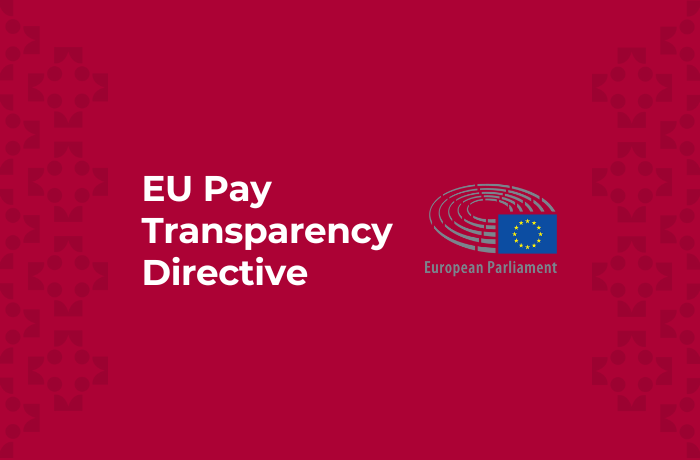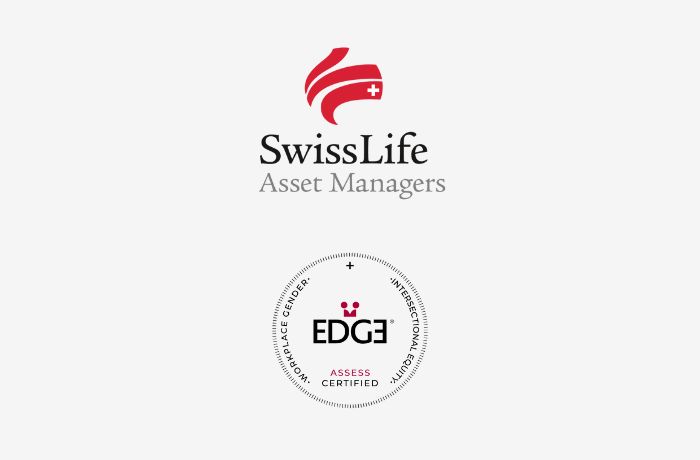What is Pay Equity and Why is it Important?
Pay equity refers to the principle that employees should receive equal pay for work of equal value, irrespective of their gender or any other dimensions of diversity. The importance of pay equity cannot be overstated, as it serves as a powerful concept and tool to rectify the long-standing injustices prevalent in the workplace.
Embracing pay equity is a proactive step towards addressing these inequities and fostering more equitable and inclusive work environments where everyone can thrive.
On a global scale, the momentum for pay equity regulation is on the rise as an increasing number of nations recognize its significance in promoting fair compensation practices for all workers. As the call for workplace diversity, equity, and inclusion resonates ever more profoundly, pay equity stands at the forefront as a critical driver for change.
So how do various countries globally enact pay equity laws, and what distinct strategies do they employ to ensure equitable compensation? And how can organizations embrace proactive measures to foster a culture of pay equity?
Pay Equity Laws Around the World
Many countries worldwide have implemented pay equity laws and regulations to address wage disparities and promote equal pay for work of equal value.
Our recent EquiNations legislative overview of the 20 countries with the highest number of currently EDGE Certified organizations, shows that every country has included equal pay for equivalent work, and equal pay on the basis of gender or any other factor, as part of their national regulation – either as part of their constitution or as part of the national labour code. For instance:
- Mexico’s constitution strictly forbids any kind of gender-based discrimination1.
- India’s constitution prohibits discrimination based on gender, race, caste, and sex2.
- The United States enforces equal pay through federal laws like Title VII of the Civil Rights Act, the Equal Pay Act, and the Lilly Ledbetter Fair Pay Act3.
- In China, the Employment Promotion Law contains provisions that safeguard the right to equal employment opportunities regardless of ethnicity, race, gender, or religious belief4.
It is a positive step that so many countries have established equal pay laws to ensure equitable compensation. Nevertheless, the absence of robust mechanisms to actively monitor organizations’ compliance with these laws hinders their effectiveness.
Without specific enforcement mechanisms in place, the accountability of organizations to address pay disparities will not be as rigorous as it could be. This underscores the importance of not only enacting these laws but also bolstering them with effective monitoring and enforcement measures to ensure lasting progress in achieving pay equity.
Moving towards Stronger Pay Equity Regulation
We are seeing more and more countries turn to pay gap assessment and reporting requirements as powerful tools for promoting transparency, accountability, and change. The significance of pay gap reporting lies in its potential to uncover hidden inequalities and drive necessary action for rectification.
A 2022 ILO study underscores how pay transparency reporting contributes to more equitable work environments, benefiting both employees and employers. For employees, such reports provide essential insights into compensation disparities, enabling them to advocate for fair remuneration and challenge potential wage discrimination. Employers gain valuable data to identify, and address pay gaps, fostering a culture of fairness and inclusivity within their organizations.
There are now many examples of countries taking proactive measures to address pay inequity through the introduction of pay gap reporting with specific legal obligations for employers. Pay gap reporting measures currently encompass various strategies aimed at shedding light on compensation imbalances. For instance:
- In Switzerland, organizations with 100+ employees must undertake a gender pay gap analysis, get it audited by a qualified specialist, and communicate the results to employees and (for listed organizations) to investors5.
- Italy requires organizations with 100+ employees to file reports on data related to male and female staff every two years6.
- France has implemented robust measures by obligating enterprises with at least 50 employees to publicly disclose gender pay gap information7.
- Australia’s Workplace Gender Equality Act requires employers with over 100 employees to submit annual gender pay gap reports, and the Fair Work Act empowers the Fair Work Commission to ensure equal remuneration8.
- Brazil’s gender pay gap regulation requires companies with more than 100 employees to publish bi-annual salary transparency reports, and to present action plans to mitigate any identified gender-based pay discrimination9.
How EDGE Certification Guides Organizations towards Promoting Equal Pay for Work of Equal Value
Pay equity is one of the four core pillars of the EDGE Certification assessment methodology which serves as a comprehensive framework for defining success in gender and intersectional equity initiatives. EDGE Certification ensures preparedness for evolving regulatory landscapes, equipping organizations with the necessary resources to uphold compliance amid emerging and changing pay equity regulations. For example, the recently approved EU Pay Transparency Directive which is set to bring about a substantial transformation in the way organizations address pay matters, both internally and externally.
Measuring and Analysing the Pay Gap
To support organizations seeking to navigate the complex landscape of pay equity regulation, EDGE Certification not only provides a framework to compliance with existing pay equity regulations, but also empowers organizations to proactively address pay disparities.
Organizations pursuing EDGE Certification are mandated to conduct a rigorous EDGE-compliant pay equity analysis, assessing whether there is a gender pay gap that cannot be explained by other relevant and objective variables.
Ordinary least squares (OLS) linear regression, a statistically sound analysis, quantifies the extent of an organization’s Unexplained Gender Pay Gap (UGPG). By examining the interplay between fundamental explanatory variables—such as gender, age, tenure, responsibility level, and specific role attributes—against an employee’s salary, this method effectively isolates and quantifies the influence of gender on pay.
To meet the EDGE Standards, the UGPG must fall within a + or – 5% tolerance threshold, which is, in fact, the same 5% tolerance threshold as the Swiss regulatory requirements, and that proposed by the European Union in the Pay Transparency Directive.
As part of EDGEplus Certification, organizations have the opportunity to conduct an Unexplained Gender and Intersectional Pay Gap (UGIPG) analysis, exploring potential disparities in pay among women and men of different Races/Ethnicities or Nationalities, contingent upon the availability of relevant data.
This analysis, performed through an EDGEplus Standard Regression Analysis, involves assessing the relationship between salary and pay and Race/Ethnicity or Nationality as additional variables, provided the relevant data is available and in accordance with local regulations. Additionally, this analysis incorporates an interaction variable that illustrates how Race/Ethnicity or Nationality influences the relationship between gender and pay, demonstrating that the impact of gender on pay can vary across different Race/Ethnicity or Nationality categories.
When pay gaps are identified through careful analysis and reporting, it becomes imperative for organizations to commit to take immediate steps to rectify these inequalities and to make well-informed and strategic decisions aimed at achieving pay equity.
EDGE Certification promotes a best practice that involves measuring gender pay gaps, discussing the findings, and then taking steps to address any issues, by having organizations commit to an EDGE-approved Action Plan.
Moreover, an integral component of the EDGE Methodology is its verification by a third-party Certification Body, a fundamental element that ensures objectivity and accuracy. This external verification profoundly enhances the credibility and reliability of organizational data, presenting a crucial advantage in the context of complying with pay gap reporting and pay transparency regulations.
With some jurisdictions progressively mandating independent data verification particularly in the context of pay equity regulation, and potentially setting a precedent for broader implementation, the value of independent third-party verification is evident.
Closing the Pay Gap: Leveraging EDGE Certification for DE&I Compliance and Progress
In the context of reaching global pay equity, it is evident that regulatory frameworks, working to close pay gaps, differ across countries. Understanding and complying with local requirements and regulations is paramount for organizations aiming to foster pay equity.
Amidst this intricate landscape, an EDGE Certification compliant pay equity analysis is a steadfast solution for organizations seeking to address gender pay disparities. By providing a structured methodology that is consistent with local regulations and global best practices, the EDGE UGPG and UGIPG methodologies, within EDGE Certification, empower organizations to take decisive action towards pay equity.
EDGE Certification not only facilitates compliance but also equips organizations to proactively address pay gaps, supporting them in their pursuit of fair and equitable compensation for all employees.
Sources
- https://leglobal.law/countries/mexico/employment-law/employment-law-overview-mexico/05-pay-equity-laws/
- https://leglobal.law/countries/india/employment-law/employment-law-overview-india/05-pay-equity-laws/
- https://www.eeoc.gov/equal-paycompensation-discrimination
- https://leglobal.law/countries/china/employment-law/employment-law-overview-china/05-pay-equity-laws/
- https://www.ebg.admin.ch/ebg/en/home/services/logib-triage/logib-modul-1/lohngleichheitsanalyse-gleichstellungsgesetz.html
- https://leglobal.law/countries/italy/employment-law/employment-law-overview-italy/05-pay-equity-laws/#Enforcement/Litigation
- https://leglobal.law/countries/france/employment-law/employment-law-overview-france/05-pay-equity-laws/#Enforcement/Litigation
- https://www.legislation.gov.au/Details/C2016C00895
- https://www.lexology.com/library/detail.aspx?g=51993b10-414e-4c22-922e-f722ad2a60bf





